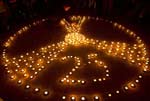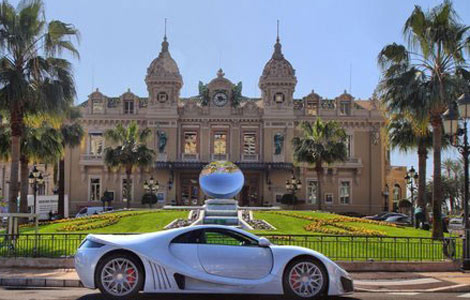Society
Under shadow of Japan, $1b sought for Chernobyl
Updated: 2011-04-19 09:59
(Agencies)
KIEV - Ukraine looks to the world on Tuesday to pledge more funds to help it contain the consequences of history's worst nuclear accident, but donors seem likely to put up less than the 740 million euros (more than $1 billion) it seeks.
Leaders from the Group of Eight industrial powers and the European Union are gathering in Kiev for a conference marking 25 years since the Chernobyl disaster, which has been brought into sharper focus by the nuclear crisis at Fukushima in Japan.
A European-backed venture foresees construction of a new shell over Chernobyl's No. 4 reactor, which blew up in April 1986, to contain radioactivity leaking through a makeshift shelter from hundreds of tonnes of radioactive material still inside.
European Commission President Jose Manuel Barroso said on Monday that the Commission would allocate an extra 110 million euros towards this and allied Chernobyl projects.
|
||||
But a Commission official, speaking on condition of anonymity, said total pledges were likely to come far below the 740 million euros that Ukraine sought.
"If we get more than 500 million euros we will regard it as a success," the official said, adding that there was a question mark over the contribution from Japan, normally one of the main donors on Chernobyl.
"They are now looking to see how much money there is to solve their own problems," the official said.
Week of Commemorations
Tuesday's "donors' conference" launches a week of commemorations in Ukraine marking the Soviet-era explosion and fire at the Chernobyl plant, located on Ukraine's northern border with Belarus.
A prevailing southeast wind carried a cloud of radioactivity over Belarus and Russia and on into parts of northern Europe.
The official short-term death toll from the accident was 31, but many more died of radiation-related sicknesses such as cancer. The total death toll and long-term health effects remain a subject of intense debate.
Prypyat, the town closest to the site, is now an eerie ghost town at the centre of a largely uninhabited exclusion zone with a radius of 30 km (19 miles).
A makeshift shelter or 'sarcophagus' erected over the damaged reactor within eight months of the accident has developed cracks and holes, and is no longer considered reliable.
The new containment projects foresee construction of a convex structure more than 100 metres high that will slide into place over the damaged reactor, sealing it at least until the end of the century.
During that time, work can be undertaken to dismantle the present shelter and move radioactive material to a safer place.
World leaders attending the conference include French Prime Minister Francois Fillon, whose country is current chairman of the G8, and U.N. Secretary General Ban Ki-moon.
Some leaders may visit the Chernobyl site itself, about 110 km (68 miles) north of the capital.
Chernobyl has remained the benchmark for nuclear accidents. Japan on April 12 raised the severity rating at its Fukushima plant to seven -- the same level as that of Chernobyl.
E-paper

Han me downs
Traditional 3,000-year-old clothes are making a comeback.
Reaching out
Fast growth fuels rise in super rich
Chinese tourists spend more
Specials

25 years after Chernobyl
Belarus, Ukraine and Russia will mark the 25th anniversary of the nuclear reactor explosion in Chernobyl.

Luxury car show
The world's most prestigious luxury, sports cars and supercars are displayed in Monaco.

Peking Opera revival
Traditional opera is enjoying a revival in Beijing thanks to some modern touches.




